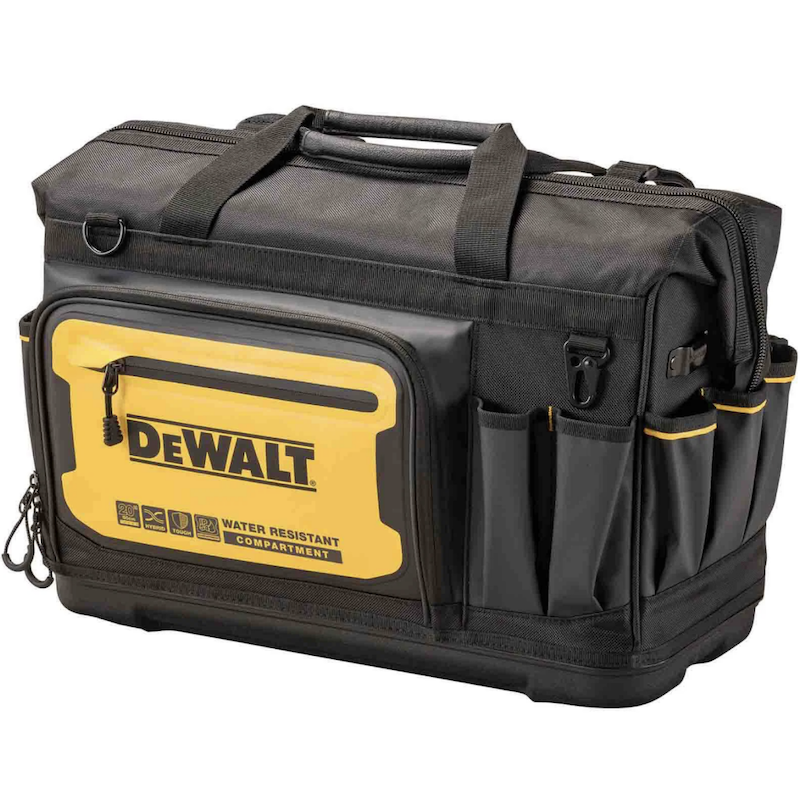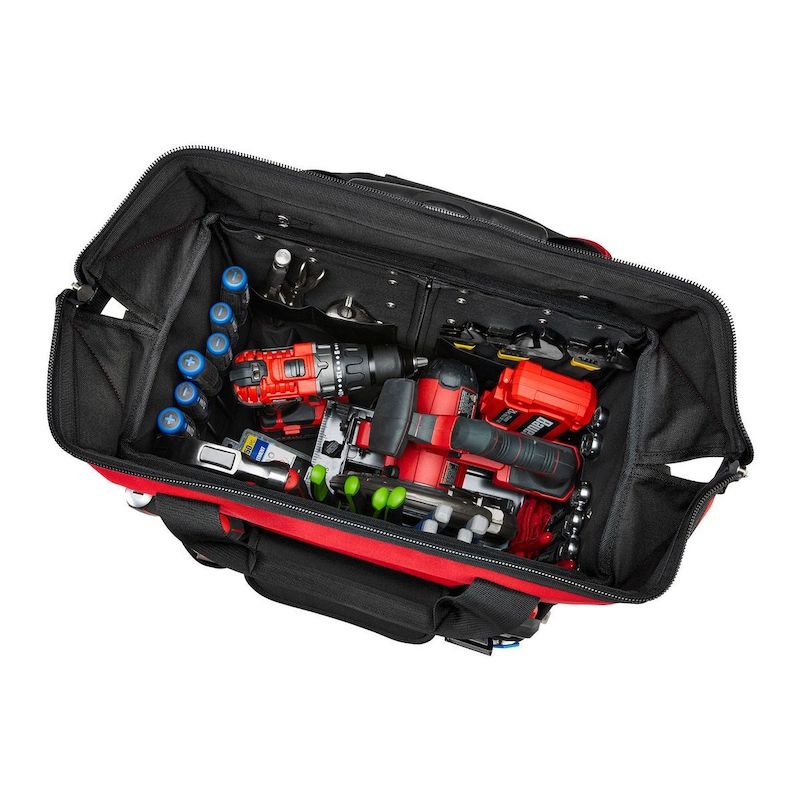Introduction
A reliable and well-organized tool bag is an essential companion for anyone working in construction, carpentry, plumbing, or any other trade that requires the use of tools. However, with a wide array of options available, selecting the best tool bag for your specific needs can be a daunting task. In this comprehensive guide, we will explore the factors to consider when choosing a tool bag, the different types and designs available, the organizational features, the durability and material considerations, and the additional functionalities that can enhance the utility of a tool bag.
Part 1: Factors to Consider When Choosing a Tool Bag
Level 1: Purpose and Usage
Understanding the specific purpose and usage of the tool bag is crucial. Whether for heavy-duty construction work, daily maintenance tasks, or occasional DIY projects, the intended usage will determine the size, capacity, and overall sturdiness required.
Level 2: Portability and Accessibility
Consider the need for portability and ease of access to the tools. A tool bag should facilitate convenient transportation while providing quick and easy access to the tools and equipment without the hassle of rummaging through a cluttered bag.
Part 2: Types and Designs of Tool Bags
Level 1: Open Tote Bags
Open tote bags provide easy accessibility and visibility to tools, allowing for quick identification and retrieval. These are suitable for larger tools and items without the need for intricate organization.
Level 2: Backpack Tool Bags
Backpack tool bags offer hands-free carrying and even weight distribution. They are ideal for professionals who need to transport a variety of tools and equipment over longer distances or uneven terrain.
Part 3: Organizational Features of Tool Bags
Level 1: Pockets and Compartments
Numerous pockets and compartments are essential for keeping tools organized and readily accessible. Different-sized pockets and dividers allow for sorting and storing a variety of tools, accessories, and hardware.
Level 2: Top-Opening vs. Wide-Mouth Design
Consider whether a top-opening or wide-mouth design would better suit your organizational preferences. Top-opening bags have better organization capabilities, while wide-mouth designs provide easier access and visibility to larger tools and items.
Part 4: Durability and Material Considerations
Level 1: Construction and Durability
Look for a tool bag constructed from durable materials with reinforced stitching and strong zippers. A rugged construction ensures the bag can withstand the rigors of a demanding work environment.
Level 2: Water-Resistant and Abrasion-Resistant Materials
Water-resistant and abrasion-resistant materials provide protection for tools against the elements and reduce wear and tear, ensuring longevity and protecting the bag’s contents in various working conditions.
Part 5: Additional Functionalities in Tool Bags
Level 1: Integrated LED Lights
Some tool bags feature integrated LED lights, which can be incredibly useful when working in low-light conditions or dimly lit spaces, offering better visibility when searching for tools.
Level 2: USB Charging Ports
Modern tool bags may come with built-in USB charging ports, allowing users to recharge their electronic devices on the go, providing a convenient and practical feature for professionals who rely on electronic tools and devices.
Part 6: Ergonomics and Comfort Features
Level 1: Padded Shoulder Straps and Handles
Ergonomic design elements, such as padded shoulder straps and handles, help distribute the weight of the tool bag evenly, reducing strain and discomfort when carrying heavy loads over long distances or periods, promoting better posture and minimizing the risk of fatigue and injury.
Level 2: Adjustable Straps and Back Support
Tool bags with adjustable straps and back support offer customization for individual comfort and body types, creating a more ergonomic carrying experience and minimizing the physical strain associated with transporting tools and equipment.
Part 7: Security and Theft Prevention
Level 1: Locking Mechanisms
For professionals who manage high-value tools and equipment, tool bags with locking mechanisms provide added security, preventing unauthorized access and deterring theft, providing peace of mind when the bag is left unattended on a job site or in public spaces.
Level 2: RFID-Blocking Technology
Some advanced tool bags feature RFID-blocking technology, safeguarding valuable tools from electronic theft and unauthorized scanning, ensuring the security of electronic devices and preventing data theft, particularly for professionals using sensitive electronic tools.
Part 8: Warranty, Customer Support, and User Reviews
Level 1: Quality Assurance
Consider the manufacturer’s warranty and customer support offerings, as well as the overall reputation and reliability of the brand. A solid warranty and responsive customer support reflect the manufacturer’s commitment to quality and customer satisfaction.
Level 2: User Reviews and Recommendations
Before making a final decision, research user reviews and seek recommendations from colleagues and industry professionals. Insights from real users can provide valuable perspectives on the durability, organizational features, comfort, and overall performance of various tool bags, aiding in informed decision-making.
Part 9: Budget Considerations and Value for Money
Level 1: Cost versus Quality
When evaluating tool bags, it’s important to balance cost with the quality and features offered. While a more budget-friendly option may be appealing, it’s essential to ensure that the chosen tool bag provides the necessary durability, functionality, and organizational capabilities for the intended use.
Level 2: Long-Term Investment
Viewing a tool bag as a long-term investment rather than a short-term purchase can justify spending a bit more on a higher-quality, durable bag. A well-constructed tool bag with advanced features and a longer lifespan can provide superior value for money over time, reducing the need for frequent replacements or repairs.
Part 10: Personalization and Customization Options
Level 1: Custom Branding and Embroidery
For professionals or businesses, the ability to personalize tool bags with custom branding, embroidery, or logos can enhance brand visibility, professionalism, and a sense of team identity, while also deterring theft and ensuring easy identification of company-owned equipment.
Level 2: Modular and Interchangeable Components
Tool bags with modular and interchangeable components offer customization and flexibility, allowing users to adapt the bag to their specific needs by adding or removing compartments, pouches, or tool holders, providing a tailored solution for individual work requirements.
Part 11: Specialized Tool Bags for Unique Requirements
Level 1: Electrician Tool Bags
Electrician tool bags are designed with specialized features such as insulated pockets, cable and wire management systems, and protective compartments for electrical tools, catering specifically to the needs and safety requirements of electricians.
Level 2: Maintenance and HVAC Tool Bags
Tool bags designed for maintenance and HVAC (heating, ventilation, and air conditioning) professionals offer compartments and pockets tailored for specialized tools, diagnostic equipment, and maintenance supplies, increasing efficiency and organization in these industries.
Part 12: Eco-Friendly and Sustainable Options
Level 1: Recycled and Sustainable Materials
For environmentally conscious professionals, tool bags made from recycled and sustainable materials provide a greener alternative. Reducing the environmental impact of production and promoting sustainability in the tool bag industry.
Level 2: Environmental Certifications
Some tool bag manufacturers prioritize environmental stewardship by obtaining certifications and adhering to eco-friendly manufacturing processes. Ensuring that their products align with recognized environmental standards and regulations.
Selecting the best tool bag involves a comprehensive assessment of various criteria such as purpose, type, organizational features, durability, additional functionalities, ergonomics, security, budget, personalization options, specialized needs, and sustainability. Carefully evaluating these factors, individuals and professionals can make informed decisions. Ensuring that the chosen tool bag meets their unique requirements and provides optimum functionality, comfort, durability, and security.
Conclusion
A well-chosen tool bag is an indispensable asset to any tradesperson or DIY enthusiast, enabling efficient organization, transportation, and access to essential tools. By considering the purpose, type, organizational features, durability, and additional functionalities when selecting a tool bag, individuals can ensure they have the ideal solution to suit their specific needs. The best tool bag will enhance productivity, convenience, and overall satisfaction in tool management and on-site work.
By incorporating these crucial factors into the decision-making process, individuals can select a tool bag. It not only meets their immediate needs but also provides long-term value, durability, convenience, and ergonomic comfort, ensuring an optimal tool-carrying experience in any professional or DIY setting.



